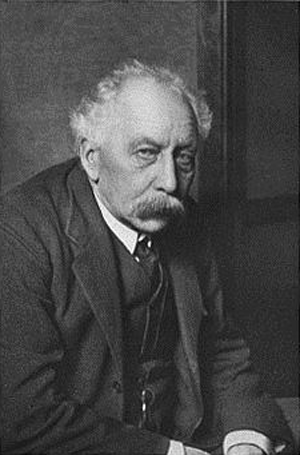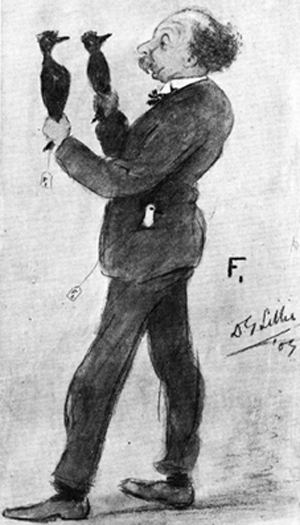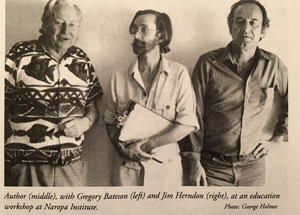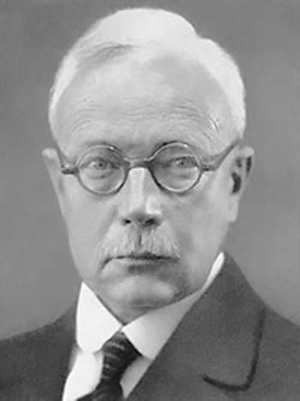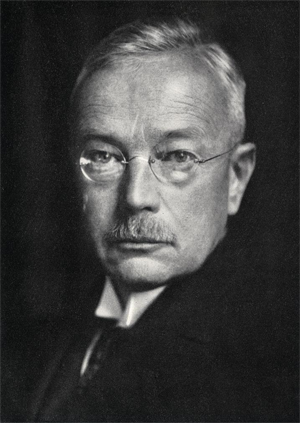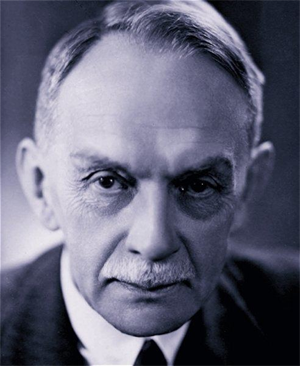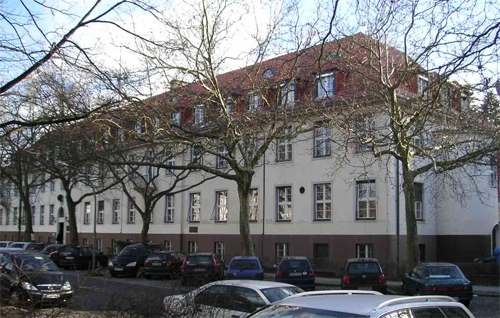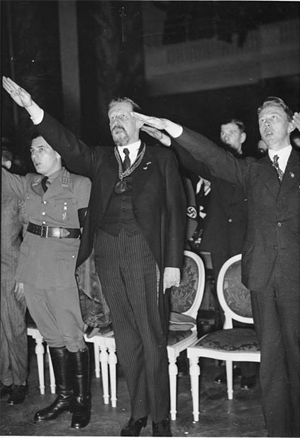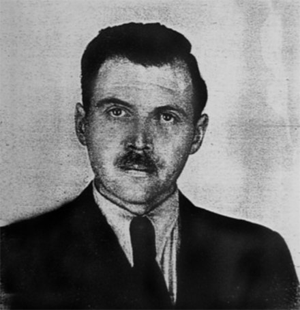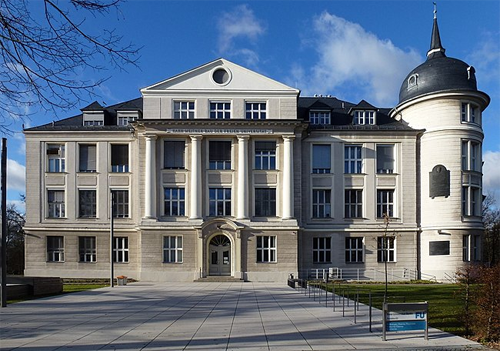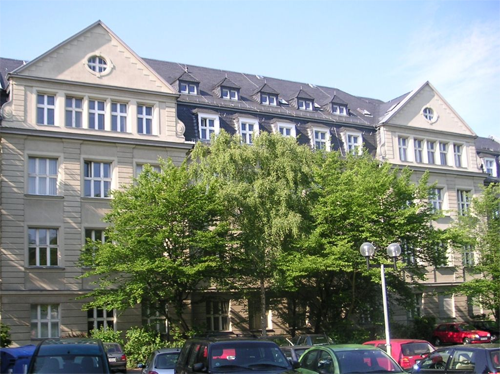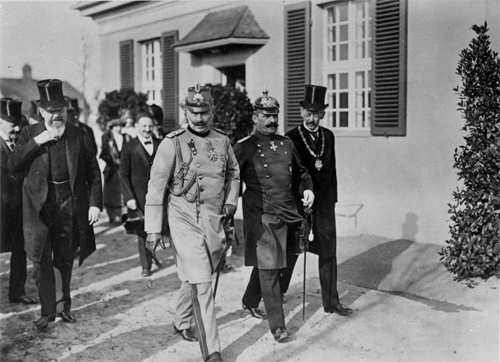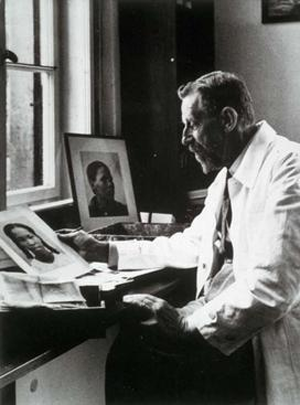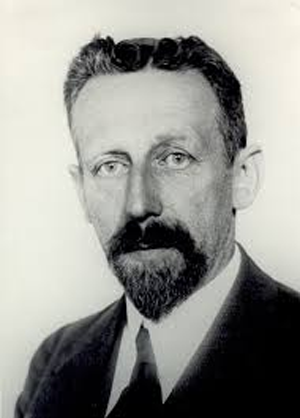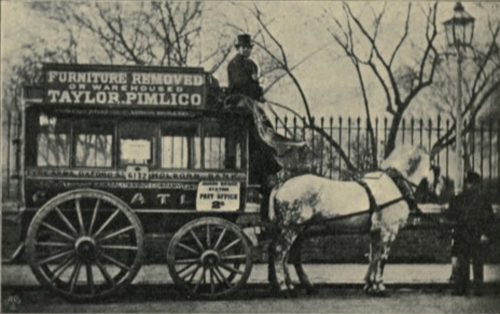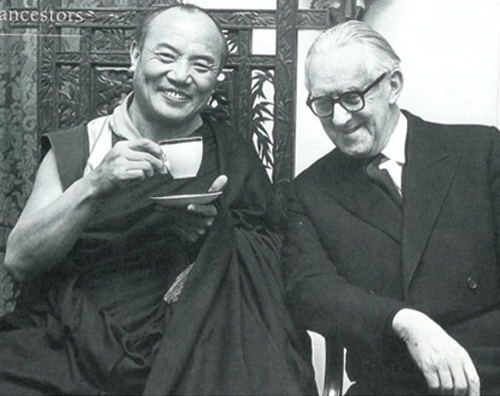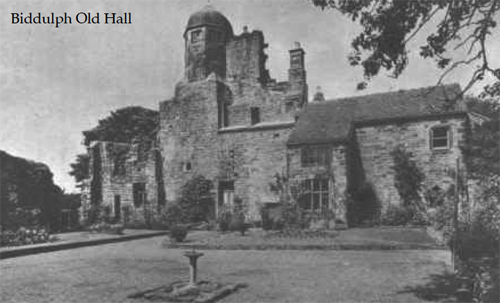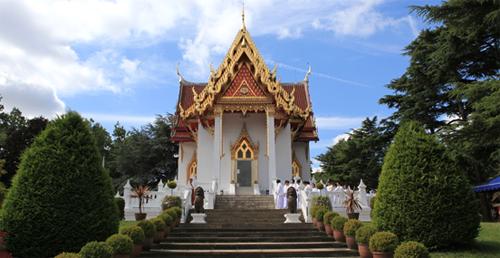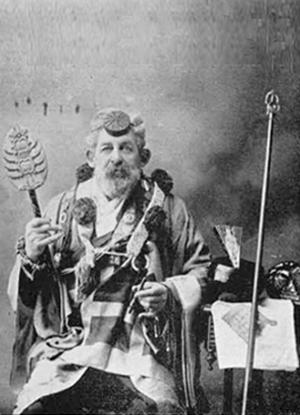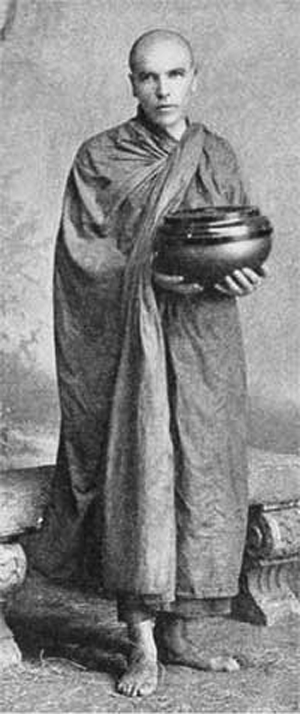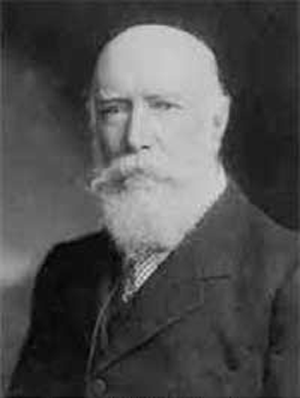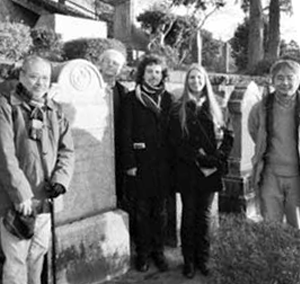Chapter 15. Further Evidence of Tibetan Independence
As a result of the Dalai Lama's constant efforts from Darjeeling and the persistent struggle of the Tibetans themselves, every single hostile Chinese was driven out of central Tibet. A number remained in Kham, but the Tibetans were in the process of driving these out as well when the Dalai Lama returned to his capital.
Shortly after his return to Lhasa, the Dalai Lama issued a proclamation to all his officials and subjects throughout Tibet. This proclamation, as well as the earlier refusal of Yuan Shih-kai's offer of rank, are regarded in Tibet as formal declarations of independence. This proclamation is dated the eighth day of the first month of the Water-Ox year (1913):
I, the Dalai Lama, most omniscient possessor of the Buddhist faith, whose title was conferred by the Lord Buddha's command from the glorious land of India, speaks to you as follows:
I am speaking to all classes of Tibetan people. Lord Buddha, from the glorious country of India, prophesied that the reincarnations of Avalokitesvara, through successive rulers from the early religious kings to the present day, would look after the welfare of Tibet.
During the time of Genghis Khan and Altan Khan of the Mongols, the Ming dynasty of the Chinese, and the Ch'ing dynasty of the Manchus, Tibet and China co-operated on the basis of benefactor and priest relationship. A few years ago, the Chinese authorities in Szechuan and Yunnan endeavored to colonize our territory. They brought large numbers of troops into central Tibet on the pretext of policing the trade marts. I, therefore, left Lhasa with my ministers for the Indo-Tibetan border, hoping to clarify to the Manchu Emperor by wire that the existing relationship between Tibet and China had been that of patron and priest and had not been based on the subordination of one to the other. There was no other choice for me but to cross the border, because Chinese troops were following with the intention of taking me alive or dead.
On my arrival in India, I dispatched several telegrams to the Emperor; but his reply to my demands was delayed by corrupt officials at Peking. Meanwhile, the Manchu Empire collapsed. The Tibetans were encouraged to expel the Chinese from central Tibet. I, too, returned safely to my rightful and sacred country, and I am now in the course of driving out the remnants of Chinese troops from Do Kham in eastern Tibet. Now, the Chinese intention of colonizing Tibet under the patron-priest relationship has faded like a rainbow in the sky. Having once again achieved for ourselves a period of happiness and peace, I have now allotted to all of you the following duties to be carried out without negligence:
(1) Peace and happiness in this world can only be maintained by preserving the faith of Buddhism. It is, therefore, essential to preserve all Buddhist institutions in Tibet, such as the Jokhang temple and Ramoche in Lhasa, Samye, and Traduk in southern Tibet, and the three great monasteries, etc.
(2) The various Buddhist sects in Tibet should be kept in a distinct and pure form. Buddhism should be taught, learned, and meditated upon properly. Except for special persons, the administrators of monasteries are forbidden to trade, loan money, deal in any kind of livestock, and/or subjugate another's subjects.
(3) The Tibetan government's civil and military officials, when collecting taxes or dealing with their subject citizens, should carry out their duties with fair and honest judgment so as to benefit the government without hurting the interests of the subject citizens. Some of the central government officials posted at Ngari Korsum in western Tibet , and Do Kham in eastern Tibet, are coercing their subject citizens to purchase commercial goods at high prices and have imposed transportation rights exceeding the limit permitted by the government. Houses, properties, and lands belonging to subject citizens have been confiscated on the pretext of minor breaches of the law. Furthermore, the amputation of citizens’ limbs has been carried out as a form of punishment. Henceforth, such severe punishments are forbidden.
4. Tibet is a country with rich natural resources; but it is not scientifically advanced like other lands. We are a small, religious, and independent nation. To keep up with the rest of the world, we must defend our country. In view of past invasions by foreigners, our people may have to face certain difficulties, which they must disregard. To safeguard and maintain the independence of our country, one and all should voluntarily work hard. Our subject citizens residing near the borders should be alert and keep the government informed by special messenger of any suspicious developments. Our subjects must not create major clashes between two nations because of minor incidents.
5. Tibet, although thinly populated, is an extensive country. Some local officials and landholders are jealously obstructing other people from developing vacant lands, even though they are not doing so themselves. People with such intentions are enemies of the State and our progress. From now on, no one is allowed to obstruct anyone else from cultivating whatever vacant lands are available. Land taxes will not be collected until three years have passed; after that the land cultivator will have to pay taxes to the government and to the landlord every year, proportionate to the rent. The land will belong to the cultivator.
Your duties to the government and to the people will have been achieved when you have executed all that I have said here. This letter must be posted and proclaimed in every district of Tibet, and a copy kept in the records of the offices in every district.
From the Potala Palace. (Seal of the Dalai Lama)1 [1. DOCUMENTS: Miscellaneous Documents of the Government of Tibet.]
About one month before the Dalai Lama's proclamation of independence in Tibet, a treaty was entered into by Tibet and Mongolia on the fourth day of the twelfth month of the Water-Mouse year (January 1913), which was signed at Urga. In that treaty, both countries declared themselves free from Manchu rule and separate from China. As sovereign states, they agreed to strengthen the ties of friendship and religion already existing between them. The Dalai Lama, as Sovereign of Tibet, approved of the formation of an independent Mongolian state, while the Jetsun Dampa Hutuktu acknowledged Tibet as an independent and sovereign state.2
After the Dalai Lama's arrival in Lhasa, Regent Tsemonling resigned, having been rewarded with the title Sha-cin-til-gig-che for his competent work during the Dalai Lama's exile. Chamba Tendar was made a Kalon and Trimon was appointed deputy commander-in-chief, with the title of Teji. Dazang Dadul was made senior commander-in-chief with the title of Dzasa. He married the daughters of the late Kalon Tsarong and took the latter's family name, thus coming into possession of Tsarong's estates, family rights, and retainers. Eight nomadic estates in Dam were given to the Sera monastery in reward for its loyal services, while the Ganden monastery acquired half the district of Tsona. In a similar way, all those who had worked for the return of the Dalai Lama were rewarded with titles and estates.
The Tengyceling monastery was disendowed. Its guilty monks were exiled and the rest dispersed to other monasteries. Punishments were inflicted on all those who had cooperated with the Chinese. On the other hand, those Chinese who had lived in Tibet for generations and had offered no resistance to the Tibetans were permitted to remain in Tibet.
The thirteenth Dalai Lama was the first to introduce paper currency into Tibet. Notes were issued in denominations of five, ten, fifteen, twenty-five and fifty tamka. The paper used was hand-made and the design traditional. After a few years, two students were sent to Calcutta to make a study of the printing of Indian currency, and on their return to Tibet, they increased the highest denomination to one hundred sang. Postage stamps were introduced at that time, and a little later, gold and silver coins were minted.
The close relationship that had developed between the Dalai Lama and the British government resulted in the latter sponsoring the education of four Tibetan students, who were sent to England for a Western education. Khenrab Kunzang Mondrong majored in mining engineering, but on his return to Tibet he did not have the opportunity to put his specialty into practice. Instead, he became the Dalai Lama's personal interpreter and also served as superintendent of the Lhasa police. The second boy, Sonam Gompo Gokharwa, studied military science; but he died shortly after his return to Tibet. The third boy, Rigzin Dorje Ringang, became an electrician. When he returned, he introduced electrification into the city of Lhasa and the Dalai Lama's summer palace. He was also employed as a translator to the Dalai Lama and the Tibetan government. The fourth boy, Wangdu Norbu Kyibuk, was trained in survey work and telegraphy. He developed further the telegraph network in Tibet and also became a magistrate in Lhasa, working for some time in the Foreign Bureau. The boys had been accompanied to England by Tsepa Lungshar, a brilliant but volatile, ambitious man who learned a great deal in England. On his return to Tibet, he became a Finance Secretary and Head of the Military Department. After the death of the thirteenth Dalai Lama in 1933, he attempted to bring about a revolution in Tibet, but failed in the attempt.
In 1913 a retired Japanese military expert, Yasujiro Yajima, visited Lhasa and was given charge of one section of the Tibetan army, which he trained in Japanese methods of warfare. During his six years in Tobet, Yajima adopted Tibetan manners and customs; but the headquarters he built for the Dalai Lama's bodyguards were created in Japanese traditional style. Another Japanese, Togan Tada, who knew the Tibetan language, came to Tibet in 1913 and lived as a monk in the Sera monastery for eleven years. He was well versed in Buddhist philosophy. (In 1961 he was instrumental in bringing some Tibetans to Japan for Buddhist studies. He now lives in Tokyo.) A third Japanese, Bunkyo Aoki,3 came to Tibet in 1912 to stay first for a year in the Drepung monastery and then one and one half years with Phunkhang in Lhasa.
The Dalai Lama was determined to clear the hostile Chinese out of Kham. He speeded up army recruitment and imported equipment from aboard that could not be made in Tibet. Food stocks were increased. For the first time, a council minister (Kalon) was sent to Kham as the governor, with overall civil and military authority. Kalon Chamba Tendar was the minister appointed to the governorship, He took with him eight generals,4 a large civil and military staff, and carried full authority to appoint members of his staff as administrators in the districts over which he exercised control.
While exerting military pressure on the Chinese, the Dalai Lama continued to press the British into arranging a tripartite conference.5 The Chinese did not like the idea of British mediation in their affairs with the Tibetans, but they could find no alternative. They had watched Mongolia pass under Russian control and were apprehensive of Tibet coming under the influence of the British. The Chinese wanted the conference to be held either in Peking or London and they did not agree to the Tibetan representatives being accorded equal status with the Chinese and British representatives. By making such objections, they hoped to delay the conference for some time, but the presence of the Tibetan troops under Chamba Tendar in Kham made them reconsider their position.
The British charge d'affaires informed the Chinese that the representatives were to attend the conference on equal footing. By sending its plenipotentiary, Ivan Chen, to the tripartite conference, the Chinese government in effect had accorded equal status to the Tibetan representative and recognized the treaty-making powers of Tibet.6
In the credentials of the Tibetan plenipotentiary, issued by the Dalai Lama, is stated: "I hereby authorize Sridzin Shatra Paljor Dorje to decide all matters that may be beneficial to Tibet, and I authorize him to seal all such documents."
The plenipotentiary, Lonchen Paljor Dorje Shatra, with Teji Norbu Wangyal Trimon as his assistant, as well as monastic representatives, arrived at Darjeeling, where they received a telegram from Sir Henry McMahon, the Secretary in the Indian Foreign Department and the British plenipotentiary to the conference, asking them to proceed immediately to Simla. A liaison officer escorted them. When they arrived at Simla, they were met at the little railway station by Charles Bell and the Viceroy's secretary. Lonchen Shatra called on the Viceroy and Sir Henry McMahon soon after his arrival. His visit was returned by McMahon and the Viceroy's secretary. The Viceroy entertained the Tibetan and Chinese representatives at a banquet, where he made a speech expressing his hope that the conference would result in a settlement agreeable to all parties concerned.
At a preliminary meeting, the British were represented by Sir Henry McMahon, assisted by Charles Bell and Archibald Rose; the Chinese by Ivan Chen and an assistant. The Tibetans were represented by Lonchen Paljor Dorje Shatra, assisted by Teji Trimon. Credentials were exchanged between the plenipotentiaries, and the Tibetans were asked to produce their proposals on the following day.
Lonchen Shatra told Charles Bell that the Dalai Lama wanted the following terms included in the agreement: that (1) Tibet was to manage her own internal affairs and (2) external affairs, with reference to the British on important issues; that (3) no Chinese Amban, officials, or soldiers would be stationed in Tibet, only traders; and that (4) Tibetan territory would include the eastern region up to Tachienlu, some of which had passed under Chinese control.7
The Tibetans produced evidence to show that Tibet had been an independent state from earlier times up to the present and that the relationship between the fifth Dalai Lama and the Manchu Emperor had been of a purely religious nature, even though the Chinese interpreted it as a political union. The Tibetan official showed that, as a result of Chao Erh-feng sending Chinese troops into Tibet on the pretext of policing the trade marts, war had broken out and the Chinese expelled. The Tibetans were seeking confirmation of their independence and the acknowledgement of the Dalai Lama as the spiritual and temporal sovereign of Tibet. They demanded that the Conventions of 1906 and 1908, signed at Peking and Calcutta respectively, be declared invalid. They pressed for a frontier with China that would include all Tibetan peoples and territories up to the Kokonor in the northeast, and to Tachienlu in the cast. They wanted a continuation of their religious relationship with the Buddhist monasteries in Inner Mongolia and China. Finally, they demanded idemnity from the Chinese for the destruction and loss of property caused in Lhasa and the Kham region by Chao Erh-feng's troops.
The Chinese based their claim to Tibet on its conquest by Genghis Khan. The fifth Dalai Lama, they said, was given a title by the Manchu Emperor. At the time of the invasion of Tibet by the Dzungar Mongols, and later by the Gurkhas, they said the Chinese army had come to the assistance of Tibet. They alleged that in the time of the K'ang-hsi Emperor, the Tibetans had asked for the presence of a Manchu Amban in Lhasa to advise the Tibetan government and for Chinese troops to protect the country. They claimed that Chao Erh-feng had come to eastern Tibet to investigate the murder of the Amban, Feng-chien, at Bah, and that troops were sent to Lhasa to police the trade marts in accordance with the terms of the 1908 Trade Agreement. They said that, because the Dalai Lama had not taken the advice of the Amban, Yu-Kang, but listened instead, to Dorjieff, the British had come to Lhasa in 1904. As a result of that expedition, China had paid an indemnity of twenty-five lakhs of rupees (166,000 pounds sterling) on behalf of the Tibetan government; consequently, it felt entitled to claim Tibet as an integral part of China. The Chinese insisted on the right to station an Amban in Tibet, with 2,600 troops, to control the foreign and military affairs of the country. One thousand of those troops would remain with the Amban and the remainder would be stationed wherever he decided. Their avowed aim was to restore the political status of Tibet to that described in the Anglo-Chinese Convention of 1906. Finally, they insisted that the boundary between China and Tibet should be placed at Gyamda, not far to the east of Lhasa.
The Chinese claims were verbal and there was no historical foundation for many of their statements. They could produce no records to prove Chinese administration of the territories in eastern Tibet. The Tibetans, on the other hand, went to the Simla conference well prepared. They produced extensive documentary evidence to support their claims. They offered in evidence fifty-six volumes of government documents, consisting of revenue records, lists of houses, officials, and headmen in the disputed areas, bonds of allegiance, and others. Sir Henry McMahon signed them in verification of their contents.8
The Tibetans refuted the various Chinese claims. Referring to Genghis Khan's conquest of Tibet, the Tibetan representative pointed out that the Khan was a Mongol, not a Chinese. It was further pointed out that at that time, Mongolia was separate from China; moreover the Khan never took over the actual administration of Tibet. As for the title given the fifth Dalai Lama by the Manchu Emperor, it was in exchange for a title given the Emperor by the Dalai Lama. Regarding the Dzungar Mongols, they were driven out of Tibet by Tibetan forces. In the war with the Gurkhas, the Manchu Emperor had sent imperial troops to help; hut he did so as an ally of the Dalai Lama and not as the sovereign of Tibet. There was no evidence offered that the Tibetans had asked for troops and an Amban in the time of the K'ang-hsi Emperor.9 As for the indemnity China paid for the 1904 British expedition, it was a fact that the British government had reduced the indemnity and then the Chinese quickly paid it, without being asked to do so by the Tibetans. To further refute this last claim, Lonchen Shatra recalled that a Mongolian nobleman had paid compensation to the Nepalese on behalf of the Tibetans, when Nepalese shops were looted in Lhasa; but that did not give Mongolia any claims on Tibet.
In an attempt to resolve the irreconcilable stands taken by the Chinese and Tibetan representatives, Sir Henry McMahon, on February 17, 1914, proposed a division of the disputed area into Inner and Outer Tibet, with Chinese suzerainty over Tibet. The Tibetans were unwilling to accept any form of Chinese overlordship in Tibet, and the Chinese were unwilling to accept the proposed boundaries; but for the sake of settling the dispute, the Tibetans reluctantly agreed to McMahon's proposal.
Under the terms of the proposed convention, Britain and China would recognize that Tibet was under the suzerainty of China. China would recognize the autonomy of Outer Tibet and would agree to abstain from interfering in the administration of that area, as well as in the selection and installation of the Dalai Lama. China was not to convert Tibet into a Chinese province, and Britain was to make no annexations. The Chinese would not send troops into Outer Tibet or attempt to station officials or establish colonies there. All Chinese troops and officials still in Tibet had to be withdrawn within three months of the signing of the Convention. The Chinese would be permitted to send a high official, with an escort not to exceed three hundred men, to reside in Lhasa. The governments of Great Britain and China agreed not to enter into any negotiations regarding Tibet, either between themselves or with any foreign power. But the Treaty of September 7, 1904 between Tibet and Great Britain specifically states that Tibet and Great Britain may make treaties directly.
Article nine of the Convention described the Sino-Tibetan boundary and the other borders in the following way: "For the purpose of the present Convention the borders of Tibet, and the boundary between Inner and Outer Tibet, shall be as shown in red and blue respectively on the map attached thereto."10
In the notes of exchange, which were to follow the main body of the convention, Tibet is mentioned as being "a part of Chinese territory", a concession determinedly resisted by the Tibetans and which was not stated in the main text. Other stipulations made in the notes included one saying that Outer Tibet would not be represented in the Chinese Parliament, and another limiting the British Trade Agencies' escorts to seventy-five per cent of that of the Chinese high official.
Although Ivan Chen initialed the draft of the Simla Convention, the government of China ordered him not to sign the final document. The continuous counter-proposals and delays began to annoy the British. Finally, the following communication was sent to the Chinese government on June 25, 1914: "As it is, the patience of His Majesty's Government is exhausted and they have no alternative but to inform the Chinese Government that, unless the Convention is signed before the end of the month, His Majesty's Government will hold themselves free to sign separately with Tibet."11 Nevertheless, the Chinese government still refused.
Sir Henry McMahon and Lonchen Shatra then proceeded to sign the final document, with the following included:
The plenipotentiaries of Great Britain and Tibet accept the following treaty. The Government of Great Britain and the Government of Tibet will recognize and abide by the Convention already concluded. The powers granted to China under the Convention shall not be recognized by Great Britain and Tibet until and unless the Government of China ratifies the Convention. This treaty, in two copies each of the English and Tibetan versions respectively, has been sealed and signed on the tenth day of the fifth month of the Wood-Tiger year, corresponding to July 3, 1914.12
The governments of Great Britain and Tibet subsequently ratified the Convention; but the government of China refused to do so. The ratification of the Convention by Great Britain and Tibet in effect eliminated Chinese claims of suzerainty over Tibet and reaffirmed Tibetan independence and treaty-making powers. Subsequently, the British and Tibetan plenipotentiaries signed a new trade regulation consisting of eleven articles to replace those regulations made in 1893 and 1908, which were canceled under Article VII of the Simla Convention.13
In fixing boundaries of defence for India, the British twice attempted to define areas of Tibetan territory as 'Indian'. As we have seen, Younghusband tried to make the Chumbi Valley part of India, but Whitehall prevented this, in a significant step towards imposing central control over frontier policy. In the previous century such measures as Younghusband's were almost invariably the prelude for the extension of the frontiers of the British Empire, but now Whitehall had called a halt to expansion, and the frontiersmen were forced to accept Whitehall's authority. Instead of being absorbed into India, and subjected to a process of 'Indianisation', the British defined the Chumbi as Tibetan, and encouraged Lhasa to exert its authority there.[37]
The cadre did not, however, abandon their efforts to secure a border which served India's strategic interests by securing possible invasion routes from, or to, Tibet. Having failed to gain control of the Chumbi, they turned their attention to Tawang, which, as Lamb states, Bell sought to bring inside India 'as a potential replacement for the Chumbi Valley... as a British outpost on the Tibetan plateau: from thence would radiate British political, cultural and economic influence'.[38]
Bell used the Simla Convention to annex Tawang and several smaller areas. In addition to the Convention itself, negotiated between Britain, China and Tibet, there were two separate agreements made then between the British and the Tibetans. These were formalised through an exchange of notes, which were attached to the Convention. One note placed the British Trade Agencies on a firmer footing, the other made Tawang part of India.[39] Tawang was unquestionably part of Tibet prior to 1914, and accepted as such by both Bell and the Government of India. But as Bell advised his government, the Simla Convention meant 'the cession by Tibet to us of the Tawang district.... Also... other tracts of Tibetan territory on... the north-east frontier’.[40]
There is no record of how Bell, the guiding hand in MacMahon’s Simla negotiations, persuaded Lonchen Shatra, the Tibetan Chief Minister and representative at the Simla Convention, to agree to cede Tawang. Certainly it was not with the Dalai Lama’s approval. As Bell himself described, the Tibetan leader publicly demonstrated his dissatisfaction with the results of his Minister's negotiations by summoning Lonchen Shatra for an interview at 6 a.m. and then making him wait until 5 p.m. for the audience.[41] But it appears that, in this instance, the dictates of the cadre's primary purpose, ensuring the security of India, meant their allies' claims, however well-founded, were disregarded.
Lonchen Shatra may simply have been naive. The newly independent Tibetan Government were grateful to Bell and his government for sheltering them during their exile, and were concerned with the threat from China, not India. Bell's notes record his plan to absorb Tawang into India, while avoiding direct payment, which would 'make us a party to interference with the integrity of Tibet'. Bell suggested that money should be given later, 'for some supposedly unconnected purpose'. In the event, a different currency was used. A month after Tibet signed the Treaty, and ceded Tawang, the Government of India supplied it with five thousand rifles and half a million rounds of ammunition. [42]
An incidental consequence of the annexation of Tawang may have been Drepung monasteries’s opposition to the British; Tawang monastery paid annual tribute to Loseling College of Drepung, which ceased when the British took over. Loseling was at the centre of opposition to Bell's Lhasa visit. [43]
It is doubtful that Whitehall understood the significance of the annexation, or even knew that Tibetan territory had been taken; within a month of the conclusion of the Simla Conference, Britain was at war with Germany, and events on the periphery of empire were given little attention. But the consequences were far-reaching. The loss of Tawang was never accepted by the Tibetans and, as Tibet legally could cede territory only if it was a sovereign state, which China did not accept, the Chinese also refused to recognise its loss. Tawang was to be an important issue in the 1962 Indo-China war.[44]
The British role in defining the Tibetan frontier was obscured until it was brought out by the works of Alastair Lamb. Officers such as Bell and MacDonald made no mention of Tawang in their memoirs; Richardson refers to the situation there as having aroused ’some resentment from the Tibetan Government' but he does not mention its former status.[45]
The British preferred to refer to Tibet's 'natural' or 'traditional' borders, concepts which reinforced the image of Tibet as a state with clearly defined, rather than constructed, frontiers. But the attempted annexation of the Chumbi Valley, the successful commandeering of Tawang, and O'Connor's plan to divide Tibet, are all evidence that the British did not originally perceive Tibet as a single, geographically defined state. Rather they sought to create a Tibet which served the interests of the Government of India. Thus Tibet's southern borders were created, not determined.
-- Tibet and the British Raj, 1904-47: The Influence of the Indian Political Department Officers, by Alexander McKay
The boundary demarcation between Tibet and India to the east of Bhutan, commonly referred to as the McMahon Line, was also agreed upon at the Simla Convention. Earlier, in March of 1914, Sir Henry McMahon and Lonchen Shatra had negotiated the common border and a boundary line drawn on a map. This was given to Lonchen Shatra for confirmation by the Tibetan government. Following are notes that were exchanged between the two plenipotentiaries.
To: Lonchen Shatra, Tibetan Plenipotentiary. In February last, you accepted the India-Tibet frontier from the Isu Razi Pass to the Bhutan frontier as given in the map (two sheets), of which two copies are herewith attached, subject to the confirmation of your Government and the following conditions: (a) the Tibetan ownership of private estates on the British side of the frontier will not be disturbed, and (b) if the sacred places of Tso Karpo and Tsari Sarpa fall within a day's march of the British side of the frontier, they will be included in Tibetan territory and the frontier modified accordingly. I understand that your Government have now agreed to this frontier subject to the above two conditions. I shall be glad to learn definitely from you that this is the case.
You wished to know whether certain dues now collected by the Tibetan Government at Tsona Jong and in Kongbu and Kham from the Monpas and the Lopas for articles sold may still be collected. Mr. Bell has informed you that such details will be settled in a friendly spirit, when you have furnished him the further information, which you have promised.
The final settlement of this India-Tibet frontier will help to prevent causes of future dispute and thus cannot fail to be of great advantage to both Governments. A. H. McMahon, British Plenipotentiary. Delhi, March 24th, 1914.14
Lonchen Shatra sent McMahon a letter accepting the boundary as delineated.
To: Sir Henry McMahon, British Plenipotentiary to the China-Tibet Conference. As it was feared that there might be friction in the future unless the boundary between India and Tibet is clearly defined, I submitted the map, which you sent me in February last, to the Tibetan Government at Lhasa for orders. I have now received orders from Lhasa, and I accordingly agree to the boundary as marked in red on the two copies of the maps signed by you, subject to the conditions mentioned in your letter, dated March 24th, sent to me through Mr. Bell. I have signed and sealed the two copies of the maps. I have kept one copy here and return herewith the other. Sent on the twenty-ninth day of the first month of the Wood-Tiger year (March 24, 1914), by Lonchen Shatra, the Tibetan Plenipotentiary. Seal of Lonchen Shatra.15
On August 4, only a month after the conclusion of the Simla Convention, Great Britain entered into World War I. Lonchen Sholkhang, the joint Prime Minister, was instructed by the Dalai Lama to send a communication to the Political Officer of Sikkim and offer support to Britain in the war against Germany.16 The following is a translation of Lonchen Sholkhang's letter to Basil Gould, the Political Officer of Sikkim at that time.
Dear Mr. Gould: We understand from the recent newspapers and from Lonchen Shatra's letter that the situation in Europe is unstable, owing to the declaration of war by Germany against Britain and France. His Holiness, the Dalai Lama, has directed me to write and tell you that, although the Chinese are waging a rigorous war against us in different parts of Kham (eastern Tibet), Tibet is willing to send one thousand Tibetan troops to India, to the support of your Empire, because we realize that the existence of Tibet depends on the continuance of Great Britain's Empire. Kindly reply to my letter at your earliest convenience, after putting our proposals before your Government. With my greeting scarf, Lonchen Sholkhang. Third day of the seventh month of the Wood-Tiger year.17
As the letter was transmitted through Lonchen Shatra, he must have had an English translation made for Basil Gould and kept the original Tibetan letter himself.
The reply from Basil Gould in Sikkim was addressed to Lonchen Shatra, who had transmitted the letter for Lonchen Sholkhang. It read:
Dear Lonchen Shatra: Thank you for your letter dated the fifteenth day of the seventh month. Immediately after I received your letter, I conveyed its substance to our Government in India, and I have received a reply from them saying that the British Government was deeply touched and grateful to His Holiness, the Dalai Lama, for his offer to send one thousand Tibetan troops to support the British Government. Please inform His Holiness that the British Government will seek the support of Tibet whenever the need arises. With greeting scarves from B. J. Gould, Political Officer of Sikkim. Twenty-seventh day of the seventh month.18
The Dalai Lama took the Political Officer's letter at face value and, in spite of his preoccupation with the troubled areas of Kham, kept one thousand of his best troops in readiness for helping Britain "Whenever the need arises." Those troops were kept available until the end of World War I.
On the seventeenth day of the ninth month of the Wood-Tiger year (1914), Lonchen Shatra and his delegation returned to Lhasa. After making a full report to the Dalai Lama and the Tibetan government he commended his assistant, Trimon, for his earlier service in the War Department at Lhasa and for his excellent work at the Simla Convention, particularly for his documentation of the proceedings. As a result of this, Trimon was made a Kalon. Dazang Dadul, known as Tsarong since his marriage, was also made a Kalon, while continuing to act as a commander-in-chief of the Tibetan army.
There was a homeopathic medical college in Tibet at Chakpori; but there was no public school devoted to astrology. The Dalai Lama then founded a public school for both medicine and astrology on the site of the abandoned Tengyeling monastery. The government bore the financial expenditures of all the trainees, who, after completing their studies, were sent to different districts. Free medicine was provided to the poor.
British troops were stationed at Gyantse to protect the trade marts as stipulated in the trade regulations. The Dalai Lama sent Dzasa Dumpa and Teji Doring with some troops to Gyantse to study the British military system. Modern army drill, hitherto unknown to the Tibetans, was now adopted as part of Tibetan military training. Two years later, the military system of the combined Chinese and Mongol army was incorporated into the training of one Tibetan regiment. A Mongol officer, Tenpai Gyaltsen, who had been trained in Russia, was given the command of another regiment, which he disciplined and drilled according to the Russian system. The Japanese officer, Yasujiro Yajima, took over the training of a fourth regiment.
These four regiments, which had been trained in foreign systems, were finally brought to Lhasa, where for four days they were made to parade, maneuver, and engage in competitive exercises before the Dalai Lama, officials of the government, and the public. After this display, it was decided that the Tibetan army would be modeled along British lines thereafter. It was provided with a national flag, which was carried by each regiment, with a regiment number to distinguish one from the other.
The Tibetan government sent Sandrup Phodrang, Dingja Kyibuk, Norgay Nangpa, and a few selected soldiers to Quetta and Shillong to be trained in artillery and machine-gun warfare. The Tibetan army had for some time been increasing in its superiority over the Chinese, and the officers and soldiers were eager to undergo special training and to serve afterwards in Tibet.
_______________
Notes:
1. Documents.
2. For the text of the 1913 treaty with Mongolia, see Bell, pp. 304-05; Richardson, pp. 265-67.
3. Bunkyo Aoko authored a book, titled Study on Early Tibetan Chronicles (Tokyo, 1955), which presents his attempt to rectify the discrepancies in the dates found in early Tibetan history.
4. The eight were Dapon Phulungwa, Dapon Jingpa, Dapon Tethong, Dapon Khyungram, Dapon Tailing, Dapon Tsogo, Dapon Marlampa, and Dapon Takna.
5. The information given here on the Simla conference was obtained from Simla.
6. A recent Indian government report states: "the fact that the Chinese side themselves had referred to these negotiations of the Tibetan Government regarding the boundary showed that the Chinese Government recognised Tibet's right in the past to have foreign relations on her own and deal with matters concerning her boundaries." (Boundary, p. 15.)
7. Bell, p. 152.
8. Simla.
9. The Imperial troops, which came to Lhasa in 1720, had been requested by Lhazang Khan, who had taken over in central Tibet (Petech, p. 55). The first Ambans were stationed in Lhasa in 1728, during the reign of the Yung-cheng Emperor, who was the son of K'ang-hsi (Petech, p. 269).
10. Boundary, p. 110.
11. Boundary, p. 113.
12. For additional details on the Simla conference, see Bell, pp. 148-59. For the complete text of the Simla Convention, see Richardson, pp. 268-72.
13. The full text of the 1914 Regulations are given in Richardson, pp. 272-75.
14. Simla; Richardson, p. 267.
15. Simla; Richardson, p. 268.
16. H. H. Dodwell, ed., The Cambridge History of India, 6 (Cambridge, 1932), p. 77.
17. Simla.
18. Ibid.

